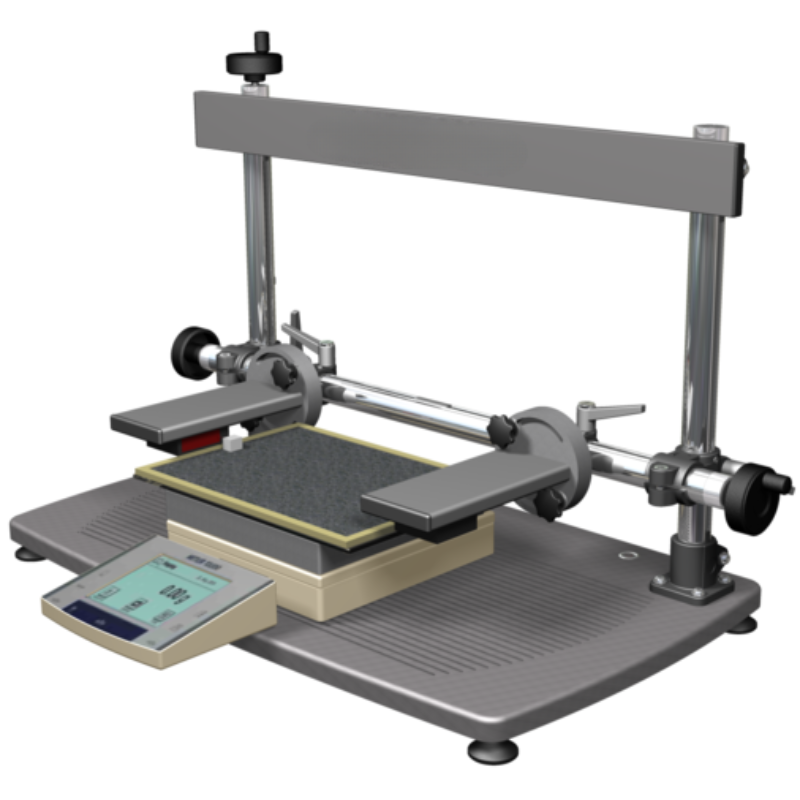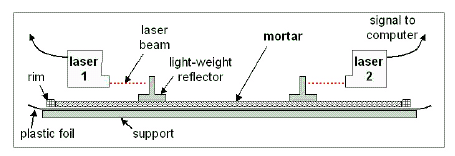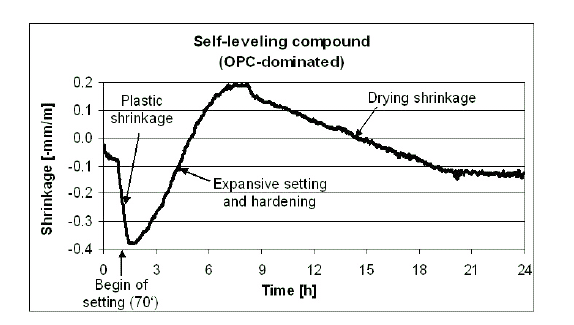Thin Layer Shrinkage System – Cement and Concrete shrinkage and expansion tester
Some building materials like self-leveling flooring compounds or plasters are applied in thin layers. These fast-setting mortars set and harden within a couple of hours and subsequent drying of such a thin layer is generally terminated after the first day. In order to investigate the dynamics of early shrinkage and expansion we developed a special set-up of two laser units that are horizontally aligned. This setup allows to investigate the different formulation parameters and their influences on the different stages of shrinkage and expansion, namely the plastic shrinkage, setting expansion, and drying shrinkage. The shrinkage/expansion behavior is strongly related to both, external (climate) and internal (formulation) factors. With respect to the latter, the beginning, intensity, and duration of the setting are key to the overall shrinkage/expansion behavior.
With building materials applied in thin layers, shrinkage is one of the major issues because of two reasons: The high surface-volume ratio causes evaporation to be a dominant mechanism for strong and fast physical shrinkage, and the intense hydration reactions can cause a pronounced chemical shrinkage, or in case of ettringite formation a strong expansion.

Measurement Principle
Measurement Principle To investigate early shrinkage/expansion mechanisms in rapidly setting thin mortar layers, a special setup was developed, which comprises two laser units. The two lasers are aimed horizontally at a pair of lightweight reflectors positioned on top of the fresh mortar. The change in distance between the reflectors is then recorded with a resolution of 0.15 micrometers. The non-contact laser device allows measurements to commence immediately after the fresh mortar is placed. A data logger, provided with the system, records, and stores the data in standard ASCII files. Synchronous registration of temperature and humidity is achievable with a balance (Mettler, Sartorius, Kern). The logger includes one thermocouple temperature channel and a combined temperature-humidity channel.
The logger features a network interface (Ethernet), facilitating easy integration into a local intranet. Using standard web browser software, you can access and visualize the data. For further data analysis, we recommend using Microsoft Excel or any similar data visualization program. The data is presented online in both graphical and numerical formats on the screen. No specialized PC software is required; all you need is your web browser software, such as Mozilla Firefox, Chrome, Opera, or Internet Explorer.

Measurement Example
The picture below shows a strong plastic shrinkage (shrinkage before setting) in the first hour. Close to the beginning of the setting, plastic shrinkage can turn suddenly into expansion. The current working hypothesis is that this is a pure structural effect related to a critical concentration of hydrates, which causes the mineral grains (cement, sand, and fine-grained fillers) to become supported by a matrix of hydrates. From this moment on any further hydration causes the mineral grains to be pushed apart (expansion). The ongoing chemical shrinkage (caused by continued hydration), which contributed to plastic shrinkage before, is now producing porosity. As the hydration rate decelerates, evaporation becomes the dominant mechanism and forces the mortar layer to shrink again. In most cases, this drying shrinkage levels out during the first day, and the mortar layer becomes stable in volume.
